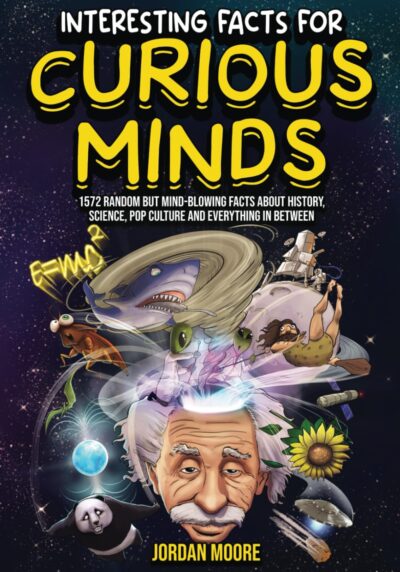88 Results in the "Non-Fiction" category
Biography & Memoir (513)
Books Like (9)
Business & Finance (3)
Children’s Fiction (235)
Dystopian (30)
Education & Learning (26)
Fantasy (1832)
fashion (1)
Fiction (5781)
Health & Wellness (21)
Historical Fiction (662)
Horror (162)
Literary Fiction (1011)
Novel (240)
Others (106)
Philosophy (147)
Poetry (208)
Politics & History (126)
Posts (121)
Psychology (50)
Religion & Spirituality (1)
Romance Novel (771)
Science & Technology (65)
Science Fiction (409)
Self-Help & Personal Development (112)
The Ultimate Book Lists (1)
Thriller / Mystery (912)
Travel & Adventure (2)
True Crime (57)
view (96)
Young Adult (751)
-
 The Art Thief by Michael Finkel tells the true story of Stéphane Breitwieser, a notorious art thief who stole hundreds of priceless pieces across Europe. The book delves into his obsession with art, the personal costs of his crimes, and the fine line between passion and crime.
The Art Thief by Michael Finkel tells the true story of Stéphane Breitwieser, a notorious art thief who stole hundreds of priceless pieces across Europe. The book delves into his obsession with art, the personal costs of his crimes, and the fine line between passion and crime.-
3.9 K • Jan 23, '25
-
4.1 K • Jan 23, '25
-
3.8 K • Jan 23, '25
-
-
Story
John Lewis
 John Lewis is a biography that tells the life story of the civil rights leader and U.S. Congressman, highlighting his pivotal role in the 1960s activism and his lifelong commitment to justice, equality, and nonviolent resistance. It celebrates his lasting impact on American history and civil rights.
John Lewis is a biography that tells the life story of the civil rights leader and U.S. Congressman, highlighting his pivotal role in the 1960s activism and his lifelong commitment to justice, equality, and nonviolent resistance. It celebrates his lasting impact on American history and civil rights.-
4.6 K • Jan 23, '25
-
4.0 K • Jan 23, '25
-
4.0 K • Jan 23, '25
-
-
Story
The Bhagavad-Gita
 The Bhagavad-Gita, a revered scripture in Hindu philosophy, is a spiritual dialogue between Prince Arjuna and Lord Krishna, set on the battlefield of Kurukshetra. Through this profound discourse, Krishna imparts timeless wisdom on duty, righteousness, selflessness, and the paths to spiritual liberation, blending philosophy, ethics, and devotion into a guide for living a meaningful life.
The Bhagavad-Gita, a revered scripture in Hindu philosophy, is a spiritual dialogue between Prince Arjuna and Lord Krishna, set on the battlefield of Kurukshetra. Through this profound discourse, Krishna imparts timeless wisdom on duty, righteousness, selflessness, and the paths to spiritual liberation, blending philosophy, ethics, and devotion into a guide for living a meaningful life.-
4.7 K • Nov 8, '24
-
4.5 K • Nov 8, '24
-
4.0 K • Nov 8, '24
-
-
 How to Live on 24 Hours a Day by Arnold Bennett is a practical and motivational book that encourages readers to make the most of their time. Written in 1910, the book offers timeless advice on how to use the 24 hours we all have each day to enrich our lives. Bennett argues that by dedicating even a small portion of our day to self-improvement—through reading, learning, or reflecting—we can achieve personal growth and fulfillment. Blending wit, wisdom, and actionable suggestions, the book inspires readers to rethink their daily routines and invest in their intellectual and spiritual well-being.
How to Live on 24 Hours a Day by Arnold Bennett is a practical and motivational book that encourages readers to make the most of their time. Written in 1910, the book offers timeless advice on how to use the 24 hours we all have each day to enrich our lives. Bennett argues that by dedicating even a small portion of our day to self-improvement—through reading, learning, or reflecting—we can achieve personal growth and fulfillment. Blending wit, wisdom, and actionable suggestions, the book inspires readers to rethink their daily routines and invest in their intellectual and spiritual well-being.-
4.7 K • Nov 8, '24
-
4.8 K • Nov 8, '24
-
4.2 K • Nov 8, '24
-
-
Story
Bruce
 Bruce by Albert Payson Terhune is a heartwarming novel about a loyal and courageous collie named Bruce, whose adventures and bond with his human companions showcase themes of bravery, love, and devotion. Set against a richly described backdrop, the story celebrates the enduring connection between humans and their canine companions.
Bruce by Albert Payson Terhune is a heartwarming novel about a loyal and courageous collie named Bruce, whose adventures and bond with his human companions showcase themes of bravery, love, and devotion. Set against a richly described backdrop, the story celebrates the enduring connection between humans and their canine companions.-
5.0 K • Nov 8, '24
-
3.9 K • Nov 8, '24
-
4.1 K • Nov 8, '24
-
-
 Be Ready When the Luck Happens by David J. Weiner is a memoir about how preparation, perseverance, and luck shaped the author's life and success. Through personal stories, Weiner explores the role of timing and resilience in achieving dreams.
Be Ready When the Luck Happens by David J. Weiner is a memoir about how preparation, perseverance, and luck shaped the author's life and success. Through personal stories, Weiner explores the role of timing and resilience in achieving dreams.-
4.9 K • Jan 23, '25
-
3.9 K • Jan 23, '25
-
4.1 K • Jan 23, '25
-
-
Story
Just Folks
 Just Folks by Edgar A. Guest is a heartwarming collection of poems that celebrate the everyday lives, struggles, and joys of ordinary people, capturing the essence of kindness, simplicity, and the beauty of human connections.
Just Folks by Edgar A. Guest is a heartwarming collection of poems that celebrate the everyday lives, struggles, and joys of ordinary people, capturing the essence of kindness, simplicity, and the beauty of human connections.-
3.9 K • Nov 8, '24
-
5.0 K • Nov 8, '24
-
4.7 K • Nov 8, '24
-
-
Story
Worldly Ways and Byways
 Worldly Ways and Byways by Eliot Gregory is a collection of essays published in 1898 that humorously critiques social etiquette, cultural norms, and the manners of the late 19th century. Gregory offers witty commentary on topics such as American versus European manners, the superficiality of certain social customs, and the influence of wealth on society. The essays, written in a light-hearted and satirical tone, provide an insightful glimpse into the social mores of the Gilded Age, making it both a delightful and thought-provoking read on human nature and social sophistication.
Worldly Ways and Byways by Eliot Gregory is a collection of essays published in 1898 that humorously critiques social etiquette, cultural norms, and the manners of the late 19th century. Gregory offers witty commentary on topics such as American versus European manners, the superficiality of certain social customs, and the influence of wealth on society. The essays, written in a light-hearted and satirical tone, provide an insightful glimpse into the social mores of the Gilded Age, making it both a delightful and thought-provoking read on human nature and social sophistication.-
5.1 K • Nov 8, '24
-
4.3 K • Nov 8, '24
-
5.0 K • Nov 8, '24
-
-
 Records of a Family of Engineers by George H. B. Ward is a memoir detailing the history and accomplishments of the Ward family, focusing on their contributions to engineering and their involvement in significant projects, while also offering insights into their personal lives and values across generations.
Records of a Family of Engineers by George H. B. Ward is a memoir detailing the history and accomplishments of the Ward family, focusing on their contributions to engineering and their involvement in significant projects, while also offering insights into their personal lives and values across generations.-
4.7 K • Nov 8, '24
-
4.2 K • Nov 8, '24
-
4.2 K • Nov 8, '24
-
- Previous 1 … 4 5

